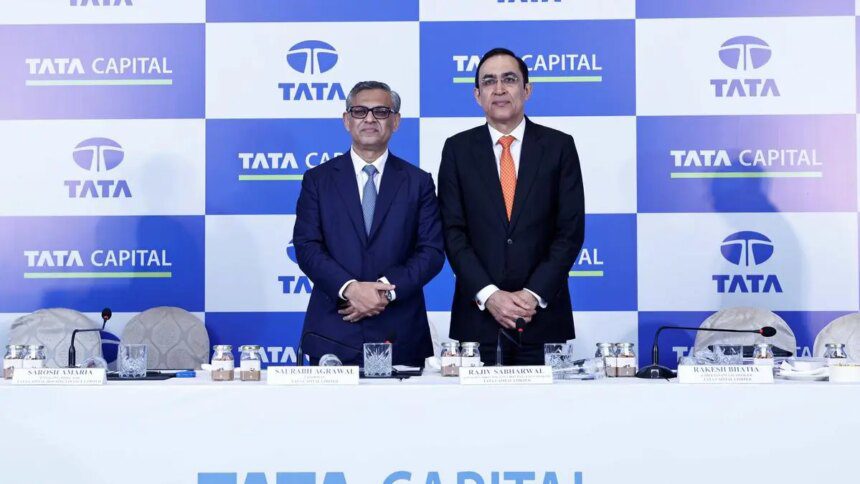Tata Sons aims to raise up to ₹7,498 crore through the initial public offering (IPO) of its subsidiary, Tata Capital, which involves the sale of up to 23 crore shares. This move comes as a necessary liquidity boost, especially following a decline of over ₹1,300 crore in dividend income from its key subsidiary, Tata Consultancy Services (TCS), in FY25. The uncertainty surrounding future TCS dividend flows, influenced by challenges in the U.S. IT market, adds urgency to this financing effort.
The IPO has set a price range of ₹310-326, which is notably lower than previous expectations communicated during investor roadshows; sources indicated the anticipated size was around $2 billion, while the current IPO size stands at $1.75 billion at the upper end of the range. The offering will include a total of 47.58 crore shares, comprising a fresh issue of 21 crore equity shares and an offer for sale of 26.58 crore shares.
Scheduled to open for subscription on October 6 and close on October 8, this ₹15,512 crore IPO is expected to be the largest in the non-banking financial company (NBFC) sector to date.
Investment bankers indicated that last week the decision was made to price the offering higher. However, over the weekend, management along with Tata Sons opted for a lower price to leave value on the table for investors and encourage broader participation. A senior official noted, “Keeping in mind the (Tata) ethos of really getting some value on the table for retail investors… I think this pricing is very, very attractive. There have been generations of investors who have benefitted from investing in the Tata Group over decades. And that is something that the Group really values.”
Through the fresh issue of shares, Tata Capital plans to raise up to ₹6,946 crore, which will support the company’s capital base. Rajiv Sabharwal, MD and CEO, explained that this capital will enable the firm to meet growth requirements over the next 2.5 to 3 years.
According to the draft red herring prospectus, the funds raised will enhance Tata Capital’s tier-1 capital base to satisfy future lending requirements. Sabharwal emphasized, “Money is the raw material for our business. And we need the necessary amount of capital, which we can leverage to expand the lending pool… The capital we are raising will help us sustain our growth for the next two and a half to three years.”
The company’s CFO, Rakesh J Bhatia, stated that its current debt-to-equity ratio of 6.5 times is expected to drop below 5 times after the IPO. Tata Sons currently holds an 88.6% stake in Tata Capital, while the remainder is owned by TMF Holdings, Tata Investment Corporation, Tata Motors, Tata Chemicals, Tata Power Company, and International Finance Corporation. Post-IPO, Tata Sons’ stake is projected to decline to 78%.
As a result of the IPO, Tata Capital’s capital-to-risk weighted assets ratio could increase to 22% from 16.9% as of March-end 2025. This IPO aligns with the Reserve Bank of India’s scale-based regulation requiring non-banking financial companies classified as Upper Layer (UL) to be listed within three years of identification.
Tata Capital’s business operations cover retail finance, SME finance, and corporate finance, with a pan-India network of 1,496 branches and total gross loans amounting to ₹2,26,553 crore as of March-end 2025. For FY25, the company reported a net profit of ₹3,665 crore, compared to ₹3,150 crore in FY24.
Published on September 29, 2025.










